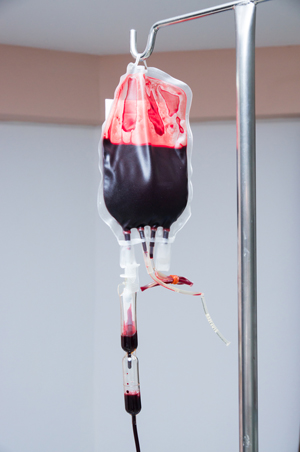Study Recommends Practices That Reduce Risk of Iatrogenic Anemia
Closed-blood sampling devices one of several successful strategies
by Dennis Ernst • November 01, 2019

The results of a year-long literature review designed to establish recommendations to reduce the risk of iatrogenic anemia (anemia from excessive diagnostic sampling) was recently published in the August issue of Critical Care..
The study was part of the CDC's Laboratory Medicine Best Practices (LMBP) initiative. The LMBP process involves the establishment of an Evidence Review Panel to participate in a review of published studies that demonstrate a consistent and positive impact on laboratory practices and patient outcomes related to laboratory practices.
The extensive literature review considered 2,564 studies published in peer-reviewed journals since 1990 about blood loss and iatrogenic anemia. Twenty-one of these met the LMBP's rigorous criteria for further evaluation. In order for a practice to be recommended, the LMBP method requires at least two studies that are rated by the method as good quality and of a substantial effect size. If there are three or more studies with such ratings, the overall strength of the evidence is judged to be high for recommending a practice.
Five types of interventions were evaluated in the 21 studies: the use of small volume tubes, implementing closed blood-sampling devices that eliminate blood waste when drawing samples from vascular-access devices, the use of point-of-care testing, leveraging education and institutional policies to guide the staff, and bundling two more interventions including blood conservation devices.
Evidence was insufficient that point-of-care testing, implementing education/policy changes, and bundled interventions were singularly effective in reducing the risk of anemia and the need for transfusions.
Evidence for the use of low-volume tubes and bundled interventions (as long as one of the bundled interventions included the use of closed blood sampling devices), however, was suggestive in both cases of reducing anemia and blood loss (70%) respectively. According to the authors, published evidence suggested either practice could be beneficial, but the data was insufficient to make a recommendation regarding their use.
The intervention found to be the most effective among the five was the use of closed blood-sampling devices, which reduced blood loss by 25% among ICU patients. Because of the overall moderate strength of evidence, the report recommends the use of blood conservation systems to eliminate blood waste when drawing blood for testing.
Dennis J. Ernst MT(ASCP), NCPT(NCCT), director of the Center for Phlebotomy Education, served on the Evidence Review panel and was one of the coauthors of the study.
"Since 90 percent of critical care patients develop anemia within three days of their ICU/CCU admission, this literature review and the CDC's recommendation provides insightful guidance for laboratories and nursing professionals to take aggressive steps to reduce this risk," says Ernst.
Related Posts and Information
overall rating: my rating: log in to rate
anemia closed blood-sampling device iatrogenic Laboratory Medicine Best Practices LMBP
